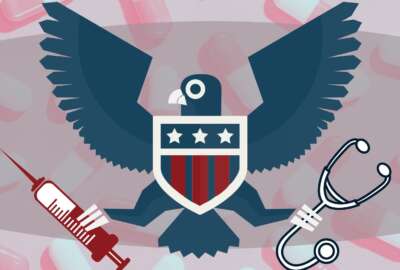Open Season has arrived. Here’s what feds should look out for
For participants in the Federal Employees Health Benefits (FEHB) program, Open Season kicked off Nov.13 and will run through Dec.11.
It’s that time of year when federal employees and annuitants can research and review — and maybe make some changes to their health plan options for 2024.
For participants in the Federal Employees Health Benefits (FEHB) program, Open Season kicks off Monday and will run until 11:59 p.m. on Dec. 11.
“We really advise that people do take this time during Open Season and look to see if there are some better plan values out there,” Kevin Moss, federal health benefits expert at Consumers’ Checkbook, said in an interview. “If you’ve been in the same plan for five, 10, 15 years, there probably are new plans you’ve never looked at before.”
If they do take a look at FEHB carriers’ plan brochures over the next month, employees and annuitants may see some significant changes. Federal News Network laid out several of these changes last week.
Some things, though, are staying the same. For one, all national plans that were available to FEHB enrollees last year are still available for the upcoming plan year.
Participants will also be paying 7.7% more on average toward their insurance premiums. That’s largely due to increases in cost and utilization of prescription drugs, emergency care and outpatient care, the Office of Personnel Management said.
One way to help offset the rising costs is by setting up a Flexible Spending Account through FSAFEDS. With an FSA, enrollees can set aside pre-tax dollars to cover certain health care costs during the upcoming plan year. Currently, just 20% of FEHB participants are enrolled in FSAFEDS.
“Setting aside the annual amount they are projected to spend in out-of-pocket health, dependent care, dental and vision expenses in an FSA saves federal employees money,” OPM said.
If they re-enroll for the 2024 plan year, participants can also carry over up to $610 of unused funds in their FSA.
Where to look inside FEHB plan brochures
All FEHB carriers publish comprehensive plan brochures for enrollees to review plan details for the following year.
Specifically in section two of those brochures, enrollees can see exactly what will be changing in the upcoming year. There may be new benefits allowed, for instance, that have never been there before.
“You may find out that there’s some additional pre-authorization requirements for a procedure. Or maybe those are taken away and there’s easier access to a service,” Moss said. “You may also find that a catastrophic out-of-pocket maximum has increased in your plan.”
Additionally, on the very last page of the plan brochure, participants will find premium tables detailing the per-paycheck costs for self, self-plus-one and family health plans.
These tables also break down the share of costs between the enrollees’ share and the government’s share of the premiums.
It’s also important to consider the type of plan. For enrollees looking to get health care coverage for two people, a self-plus-one plan option will be less expensive than the family plan option about 75% of the time. But there are still about 40 family plan options in FEHB that come at a lower cost than the self-plus-one plan options.
“This can add up to some serious money,” Moss said.
OPM’s plan comparison tool lets FEHB participants weigh the costs and benefits of multiple plan options at a time.
Copyright © 2025 Federal News Network. All rights reserved. This website is not intended for users located within the European Economic Area.
Drew Friedman is a workforce, pay and benefits reporter for Federal News Network.
Follow @dfriedmanWFED






